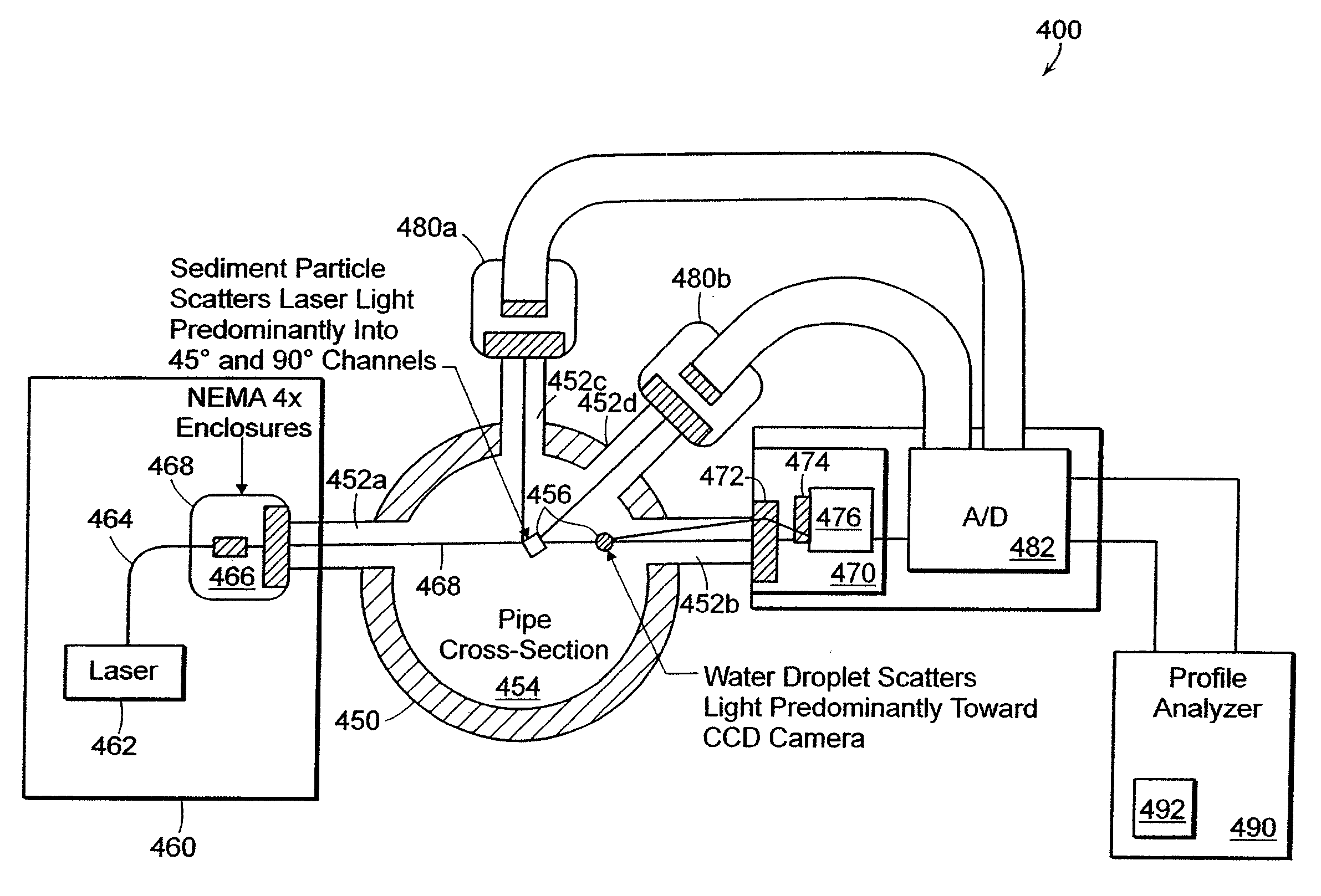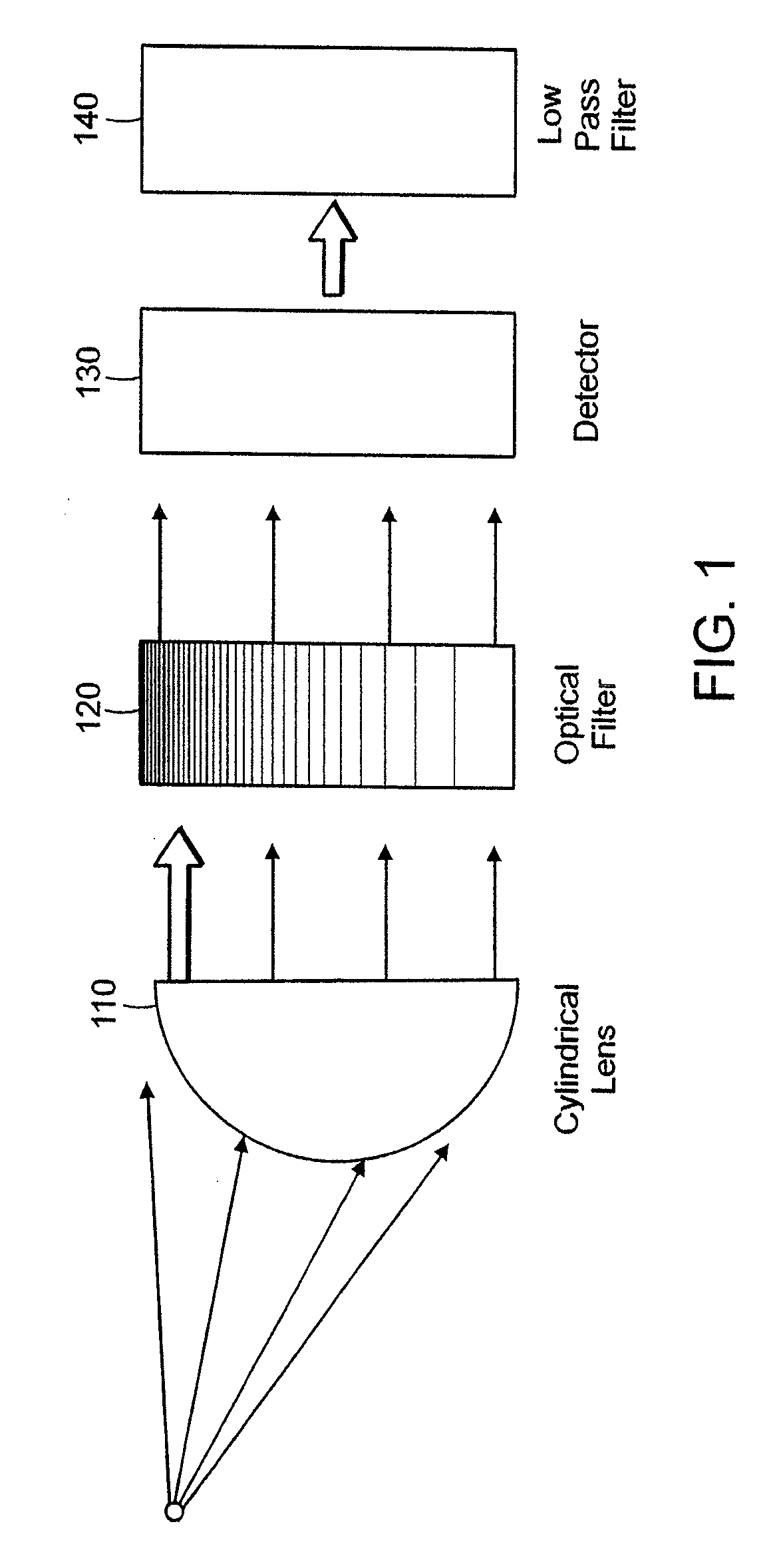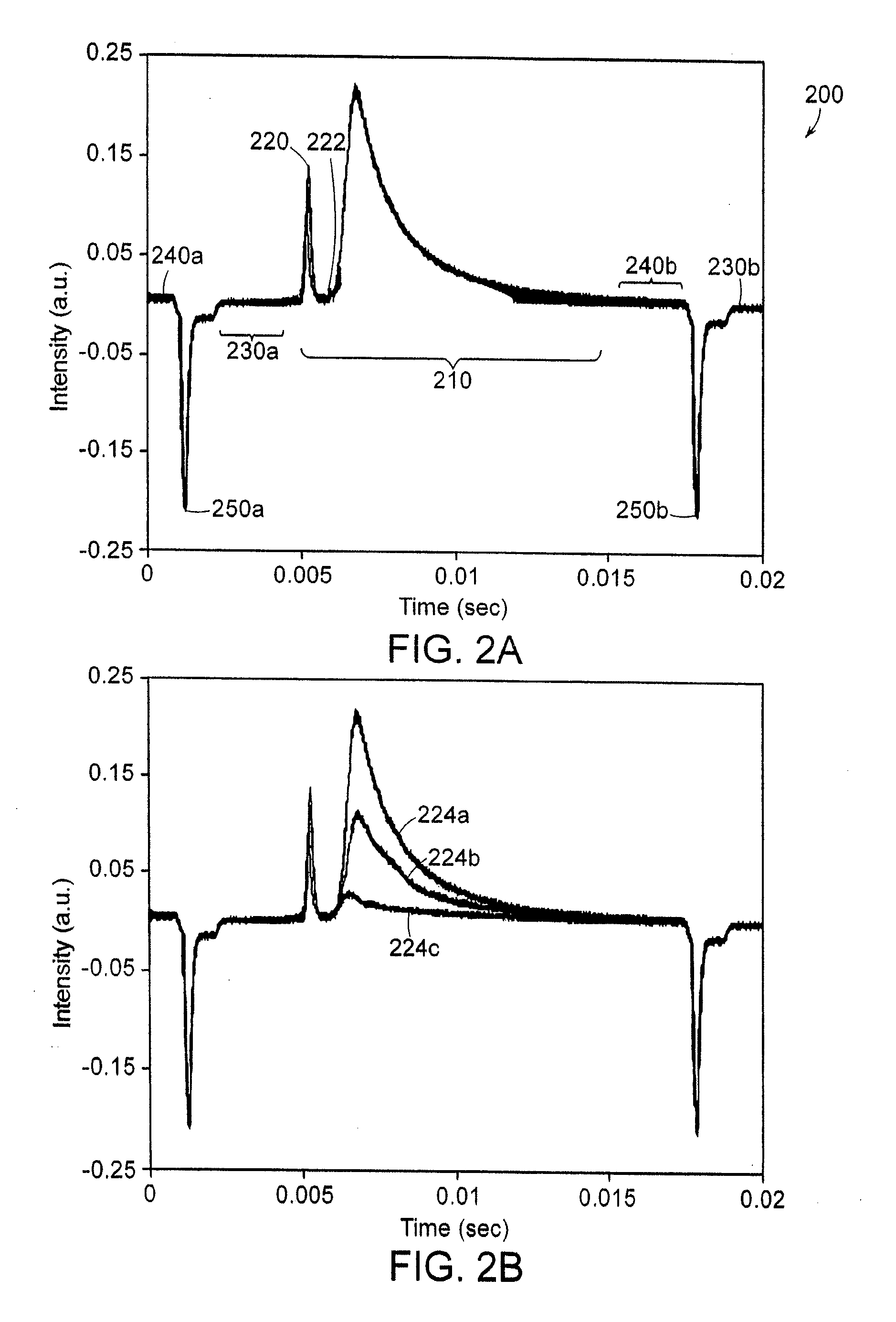Cylindrical lens-based light sensor and use of the sensor in an automated method and apparatus for monitoring a target fluid for contaminants
a technology of light sensor and cylindrical lens, which is applied in the direction of instruments, measurement devices, scientific instruments, etc., can solve the problems of high cost of signal processing computation power, lack of spatial extent of detector,
- Summary
- Abstract
- Description
- Claims
- Application Information
AI Technical Summary
Benefits of technology
Problems solved by technology
Method used
Image
Examples
Embodiment Construction
[0035] According to one aspect of the invention, a light scattering sensor is provided with a cylindrical lens focusing received light along substantially parallel lines, or bands, that correspond to a range of scattering angles and a linear detector that detects the light intensity along the substantially parallel lines. By using a cylindrical lens, the lens serves as an auto-collimator, whereby light scattered at a specific angle from the collimated light beam strikes the linear detector at a corresponding specific location regardless of the location from where the light was scattered.
[0036]FIG. 1 is a schematic diagram of a cylindrical lens-based, light scattering sensor according to one embodiment. The light scattering sensor 100 includes a cylindrical lens 110, an optical filter 120, a linear detector 130 and a low-pass filter 140. The cylindrical lens 110 is preferably positioned one focal length in front of the detector 130 and serves as an auto-collimator, whereby light sca...
PUM
| Property | Measurement | Unit |
|---|---|---|
| size | aaaaa | aaaaa |
| concentration | aaaaa | aaaaa |
| concentration | aaaaa | aaaaa |
Abstract
Description
Claims
Application Information
 Login to View More
Login to View More - R&D
- Intellectual Property
- Life Sciences
- Materials
- Tech Scout
- Unparalleled Data Quality
- Higher Quality Content
- 60% Fewer Hallucinations
Browse by: Latest US Patents, China's latest patents, Technical Efficacy Thesaurus, Application Domain, Technology Topic, Popular Technical Reports.
© 2025 PatSnap. All rights reserved.Legal|Privacy policy|Modern Slavery Act Transparency Statement|Sitemap|About US| Contact US: help@patsnap.com



